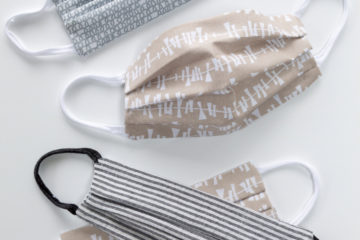With December 1 fast approaching, it’s time to make a choice! When you’re on an ethical journey, it seems there is a potential pitfall at every turn, so how do you make sure your seasonal choices don’t undermine your value choices? While Christmas can be a beautiful tradition of generosity and community, it can also be a time of over-consumption and needless waste. We’re here to help you relax this Christmas, and provide 3 great ways to ‘Tree’ this festive season.
1. Tree buying alternatives
If you’re dreaming of a carbon-neutral Christmas (see what I did there), with the added bonus of solving budget or space concerns, why not decorate a tree you already have in your home? Or, buy a suitably sized native tree, then after Christmas, plant it into the ground where it can become a home for local birds and wildlife! CNCF (Carbon Neutral Charitable Fund – tree planting Australia) may be able to help you find a location to plant or if you’re happy to do the ‘no-tree’ thing, why not send them a small donation instead, and they will plant a carefully selected native species that supports natural ecosystems and wildlife, more resilient to Australia’s climate.

The WA Christmas tree, Nuytsia floribunda – Photo: Australiantraveller.com
2. Cut-tree alternatives
Still prefer the fresh aroma of a pine tree but don’t want to create waste? Grab yourself a truly green tree this year by renting or buying a living tree. A living tree gives the same pleasant aroma and experience, and will produce oxygen and absorb carbon dioxide. Live, potted trees can be rented or bought from a number of organisations, (a quick google search brought up a few nearby to me on Gumtree), or try your local nursery or farmers market.
If after weighing up the above options you’re still debating cut or fake, then a real Christmas tree may be the better option. To reduce waste, keep in mind your disposal method after the Christmas/festive season is done, for example some tree farms may offer a removal/disposal option, or local councils may offer a mulching service if you do some quick research before buying.
3. Real Tree, Real People – Support Local

Pine Tree Seedling
Direct from the farm is a great way to support a local business and reduce the carbon-omissions of your purchase (why not offer to collect one for others in your family/community in a single trip!). If you have a ‘Christmas Tree Farm’ or pine tree farm in your local area, the chances are this is what they spend their entire year working towards. The Christmas Tree Farm in my area is a family owned and operated business that was established 30 years ago! A tractor ride, sausage sizzle and picking your very own tree with family is a truly wonderful tradition each festive season. Many local farmers will use sustainable planting or watering practices (bonus – pine trees are known to have a high drought tolerance!), for example our local nursery uses continuous planting-methods meaning the young trees are establishing themselves at the same time as the older ones are being harvested.

Christmas Tree Farm -Photo: Sophie Newman
Notes> Organic vs Plastic
For many reasons, having a real tree is preferable to the alternative. Plastic Christmas trees and decorations are for the most part ‘disposable’ which is why you see so many of them on hard waste each year. It’s always better from an environmental-view, to buy a locally grown plant over non-biodegradable imitation. A plant is a renewable resource, 100-percent biodegradable and easily recycled. While growing, they do use valuable water resources (see alternatives above and check with your farmer regarding their use of recycled-water) but they also neutralise some carbon-dioxide. Plastic Christmas trees are generally made of non-recyclable, non-degradable plastics and metals which won’t decompose for millions of years and contribute to our landfill problem.
Most importantly…
Even though waste is more prevalent over the Christmas period, it doesn’t mean we should feel guilty about giving gifts or enjoying time with friends and family. It is most important to remember why we’re celebrating; a time of community, togetherness and generosity, and if we need to spend money, what we spend it on.
Happy festive season! Let us know about your conscious-christmas plans or link to your fav meme below! 🙂


Infographic image: the true cost of Christmas




